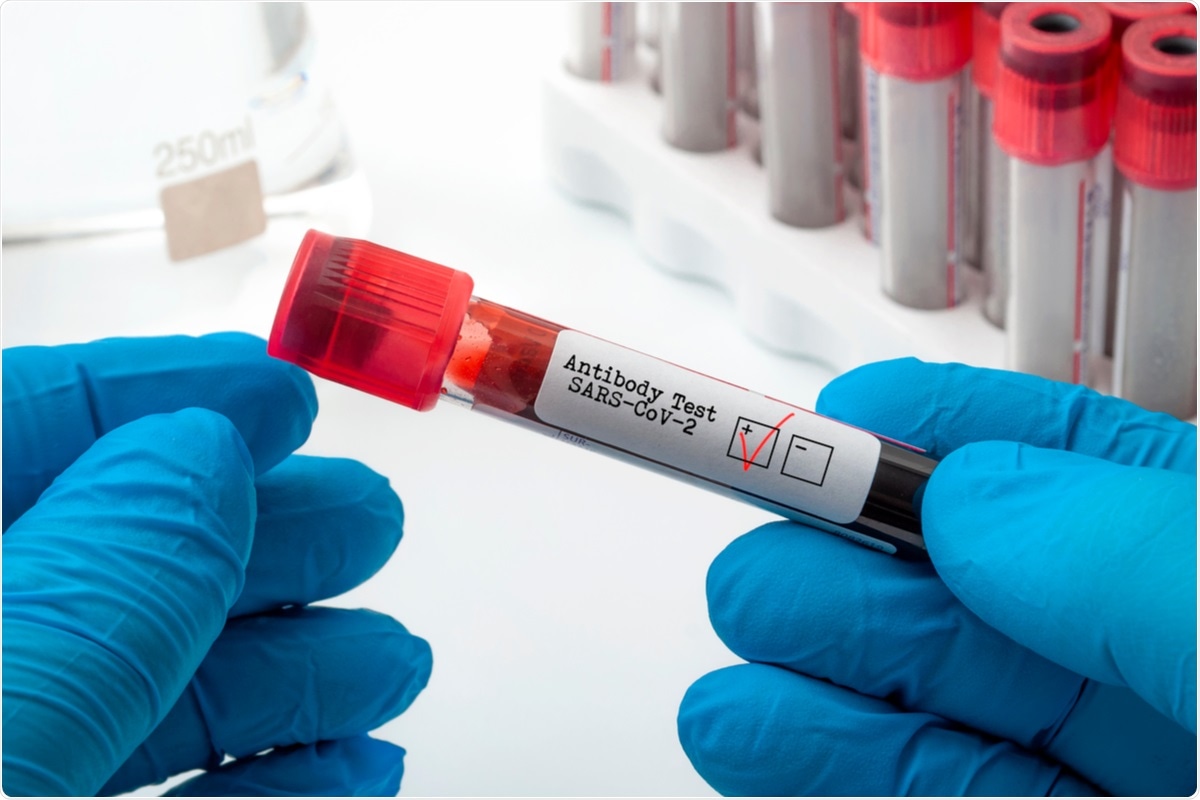The severe acute respiratory syndrome coronavirus 2 (SARS-CoV-2), as well as other ribonucleic acid (RNA) viruses, harbors error-prone polymerases that endure frequent genome mutation. This leads to the generation of diverse genomes and multiple viral quasispecies among individuals.

Study: Establishment of human post-vaccination SARS-CoV-2 standard reference sera. Image Credit: Victor Moussa / Shutterstock.com
Background
Viral mutations have led to an increase in the transmissibility of SARS-CoV-2, which is the virus responsible for the coronavirus disease 2019 (COVID-19). As a result, several new waves of infections have occurred, the most recent of which have been due to the emergence of the SARS-CoV-2 Delta (B.1.617.2) and Omicron (B.1.1.529) variants of concern (VOC).
SARS-CoV-2 VOCs pose additional threats of altered disease course and immune escape, despite the presence of natural or vaccine-induced antibodies. Therefore, there remains an urgent need to determine the effectiveness of antibodies triggered by different SARS-CoV-2 vaccines in neutralizing newer variants.
About the study
A new study published on the medRxiv* preprint server reports the generation of pooled and large volume reference sera reagents that were obtained from subjects vaccinated with one of four COVID-19 vaccines.
The study included recipients of the two SARS-CoV-2 messenger ribonucleic acid (mRNA) vaccines by Pfizer-BioNTech (BNT162b2) and Moderna (mRNA-1273), the replication-incompetent human adenovirus type 26 vaccine manufactured by Johnson & Johnson (Ad26.COV2.S), as well as the recombinant trimeric spike protein expressed by baculovirus and incorporated into a nanoparticle vaccine plus Matrix-M adjuvant developed by Novavax (NVX-CoV2373).
Taken together, 68 healthy donors with no evidence of prior infection participated in the current study. The study participants were between the ages of 18 and 65 years, 63% of whom were females. Vaccinated subjects with no history of SARS-CoV-2 infection who had antibodies to the SARS-CoV-2 spike protein were assessed for their T-cell responses to SARS-CoV-2.
Study findings
Most subjects received the BNT162b2 vaccine, followed by mRNA-1273, NVX-CoV2373, and Ad26.COV2.S. After exclusions, 23 subjects donated one unit of whole blood between June and December 2021. The final volume in each pool was measured to be approximately 1.5 L for BNT162b2, mRNA-1273 or Ad26.COV2.S, and 1.2 L for NVX-CoV2373. The timings of the two vaccine doses were similar with a range of 24-29 days between doses.
The average time elapsed between sample collection and final vaccination dose varied for different vaccines. The time-spans were 69 days for donors who received the BNT162b2 vaccine, 102 days for those who were given the mRNA-1273 vaccine, 83 days for Ad26.COV2.S vaccine recipients, and 152 days for those who received the NVX-CoV2373 vaccine.
The range of the World Health Organization (WHO) spike antibody titers was 1,276-1,882 IU/mL in the serum pools of BNT162b2, mRNA-1273, and Ad26.COV2.S recipients. However, NVXCoV2373 recipients elicited the lowest spike antibody titer levels of about 604 IU/ml. This was likely due to the longer time-lapse between the final vaccine receipt and sample collection.
Of note, neither of the serum pools exhibited nucleoprotein-specific antibodies. The total spike antibody concentration was depicted by the inhibition of the viral receptor-binding domain (RBD) lodgment to angiotensin-converting enzyme 2 (ACE-2).
Conclusions
The serum pools described in this study are the first vaccine-specific reference reagents that facilitate the characterization of SARS-CoV-2 spike protein antibodies. The large volume of the reference serum pool for each vaccine should enable continuity for testing current and future SARS-CoV-2 variants. This methodology can aid in delineating any differences in the binding or function of antibodies generated by various vaccines.
Due to the similarity in spike proteins across all of the four vaccines assessed in the current study, differences in antibody responses were speculated to occur either due to host genetic variation, level of vaccine-induced immunity, waning of immunity post-vaccination, and/or differences in vaccine platform. Thus, this methodology provides an option to evaluate different vaccine platforms.
The findings of the current study aid in the prediction of vaccine effectiveness in vitro. Furthermore, these reference reagents enhance the comparison of results of antibody binding, blocking, or neutralization assays at various locations.
*Important notice
medRxiv publishes preliminary scientific reports that are not peer-reviewed and, therefore, should not be regarded as conclusive, guide clinical practice/health-related behavior, or treated as established information
- Xiang, J., Katz, L., Winokur, P., et al. (2022). Establishment of human post-vaccination SARS-CoV-2 standard reference sera. medRxiv. doi:10.1101/2022.01.24.22269773. https://www.medrxiv.org/content/10.1101/2022.01.24.22269773v1.
Posted in: Medical Science News | Medical Research News | Disease/Infection News | Pharmaceutical News
Tags: Adenovirus, Angiotensin, Angiotensin-Converting Enzyme 2, Antibodies, Antibody, Blood, Cell, Coronavirus, Coronavirus Disease COVID-19, covid-19, Enzyme, Genetic, Genome, immunity, in vitro, Mutation, Nanoparticle, Omicron, Protein, Reagents, Receptor, Respiratory, Ribonucleic Acid, RNA, SARS, SARS-CoV-2, Severe Acute Respiratory, Severe Acute Respiratory Syndrome, Spike Protein, Syndrome, T-Cell, Vaccine, Virus

Written by
Nidhi Saha
I am a medical content writer and editor. My interests lie in public health awareness and medical communication. I have worked as a clinical dentist and as a consultant research writer in an Indian medical publishing house. It is my constant endeavor is to update knowledge on newer treatment modalities relating to various medical fields. I have also aided in proofreading and publication of manuscripts in accredited medical journals. I like to sketch, read and listen to music in my leisure time.
Source: Read Full Article



